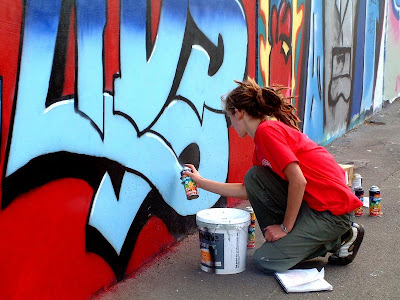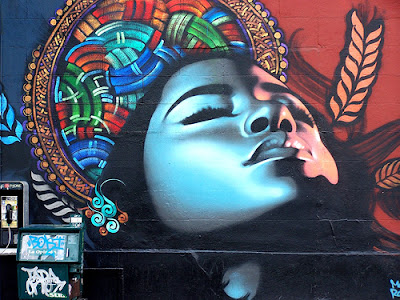Graffiti art doesn't just mean art we see sprayed on walls. In fact, graffiti art has such strong characteristics that it's easy to spot them everywhere - in schools, on sidewalks, on bicycles, on automobiles, on skateboards and on textbooks, just to name a few examples.
Graffiti art has a loose feel about it. There are no strict rules to creating graffiti art, except a few distinct characteristics that always make graffiti art appear stylish. Let's see what those characteristics are.
First, graffiti art are usually loose forms. But these forms are usually just clear enough to represent what they're supposed to represent. The shapes are loosely created, and the subjects overlap one another in a rather random manner. Highlights are applied to the image if needed but again, these are loosely applied.
Second, texts are usually visible, and drawn in an embossed manner that gives a 3D impression. These texts usually form a few words or a short phrase, and makes up a part of the entire graffiti artwork.
And finally, graffiti art is usually created with a wide variety of colors. Bright and luminous colors like red, orange, yellow, green and blue are preferred. There's little or no intention for color harmony and the goal here is to create a dazzling array of colors that draw attention to the graffiti art itself.

























